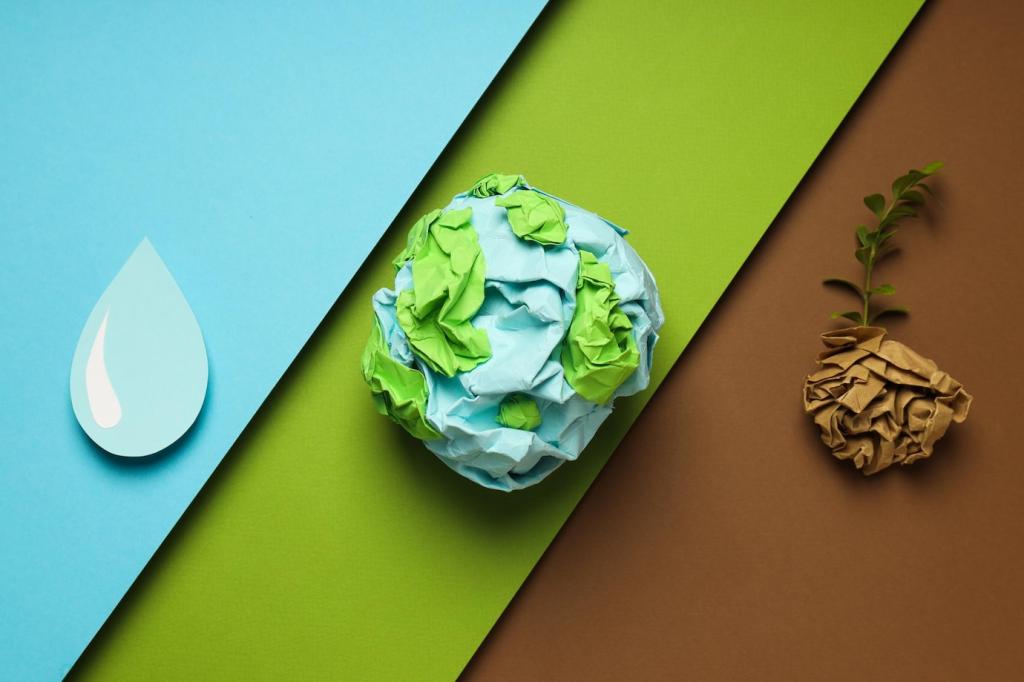
Oceans Under Suds: Environmental Consequences of Cleaning Product Pollution
Selected theme: Environmental Consequences of Cleaning Product Pollution in the Oceans. Explore how everyday detergents, disinfectants, and fragrances travel from our homes to marine ecosystems, changing water chemistry, stressing wildlife, and reshaping coastal communities—and what we can do together to restore balance.
Pipes, Storm Drains, and Overflow
During heavy rain, combined sewer systems can spill diluted but still potent mixtures of surfactants, preservatives, and fragrances into rivers and harbors. Those pulses travel quickly, creating short, sharp shocks to coastal waters. Share your city’s overflow alerts below and help map risk hotspots.
Greywater and Septic Realities
Rural and coastal homes often rely on septic systems that were not designed to remove modern disinfectants or complex surfactants. Leaks and poor maintenance can send chemically active greywater toward marshes and tidal flats. Comment if your community has updated guidelines or monitoring tips others can learn from.
The Invisible Cocktail
Even when wastewater plants function well, trace residues pass through: anionic and nonionic surfactants, quats, preservatives like triclosan, optical brighteners, and lingering fragrances. Together, they form a complex cocktail with cumulative effects. Subscribe for our deep-dive breakdowns on each chemical family and their pathways.
Surfactants and Seascapes: Physics Changed by Suds
Surface Tension and Plankton Rafts
By loosening surface tension, detergents can reorganize microlayer communities where plankton, larvae, and eggs often concentrate. That delicate film helps exchange gases with the atmosphere. Disturb it, and oxygen transfer shifts. Tell us if you have observed slick, mirror-like patches after storms near your coastline.
Foam Lines and Filtered Light
Sea foam often intensifies when surfactants are abundant, herding organic matter into long lines that trap debris. These foamy bands scatter light, changing photosynthesis rates just beneath the surface. Divers: report your visibility changes after rain events to build our citizen science visibility index.
Microbial Flare-Ups and Oxygen Debt
Some cleaning ingredients encourage rapid microbial activity, briefly boosting decay and reducing dissolved oxygen near outfalls. Low oxygen stresses invertebrates and fish, pushing them away from vital nursery areas. Join our newsletter for upcoming guides on simple, local dissolved oxygen monitoring with affordable sensors.
Toxic Threads: Biological Impacts Across Marine Life
01
Anionic surfactants can irritate gill tissues, prompting excess mucus production that hampers oxygen uptake. Short exposures may be survivable, but repeated peaks after storms create chronic stress. Share field notes from anglers or aquarists who have noticed unusual breathing patterns or schooling behavior after rain.
02
Certain legacy surfactants and preservatives have been linked to hormone disruption in lab and field studies, affecting spawning timing and larval development. Small changes compound across generations. If you work in hatcheries, tell us what safeguards you use and which indicators you monitor during wet seasons.
03
Some persistent fragrance compounds and transformation products accumulate in sediments and organisms, echoing upward through the food web. When prey species are compromised, predators face nutritional stress. Subscribe to get our forthcoming explainer on sediment cores and what they reveal about long-term contamination patterns.


People in the Loop: Seafood, Beaches, and Health
While regulated limits protect consumers, monitoring often focuses on a narrow set of chemicals. Emerging compounds can slip through gaps. Community-led sampling helps flag hotspots early. If you are part of a coastal food cooperative, share your testing practices and what consumers ask most often.
People in the Loop: Seafood, Beaches, and Health
Foam slicks and outfall plumes can irritate eyes and skin, especially after storms. Simple choices—checking advisories, avoiding discharge zones—reduce risk. Tell us your local beach’s red-flag rules, and subscribe for our printable pre-swim checklist focused on cleaning-product pollution indicators.
A volunteer kayaker described dawn paddles through a silent marina after rainfall, meeting curiously straight foam lines along docks where laundry rooms vented above. The scent was unmistakably powder-fresh. She now logs wind, tide, and foam photos—join her project and upload your sunrise observations.
Field Notes and Human Stories
A shellfish harvester recalled a season when two heavy storm overflows coincided with disinfectant spikes. Harvest paused, bills piled up, and community fridges filled the gap. He credits neighbor alerts and quick testing for a fast reopening. Share your rapid-response playbook to help other coastal towns.
Field Notes and Human Stories
Turning the Tide: Practical Solutions That Work
Use fragrance-free, dye-free products with readily biodegradable surfactants; dose correctly; choose concentrates; and avoid unnecessary disinfectants for routine tasks. Label literacy matters. Comment with your favorite verified certifications, and subscribe for our pocket guide to ingredients that play nicer with marine life.
